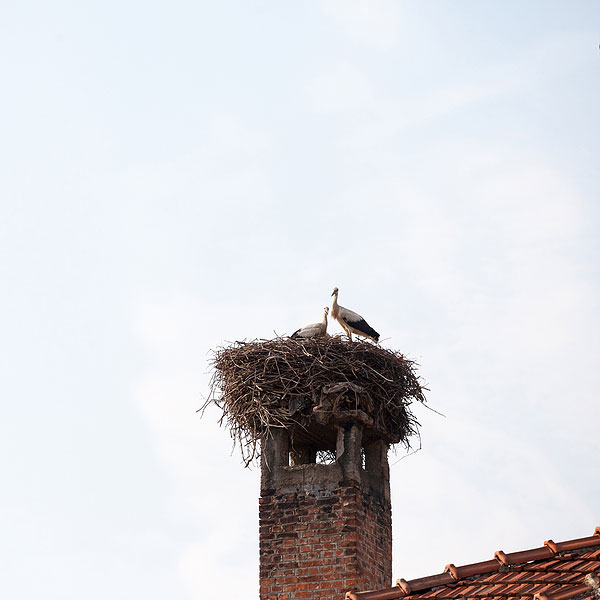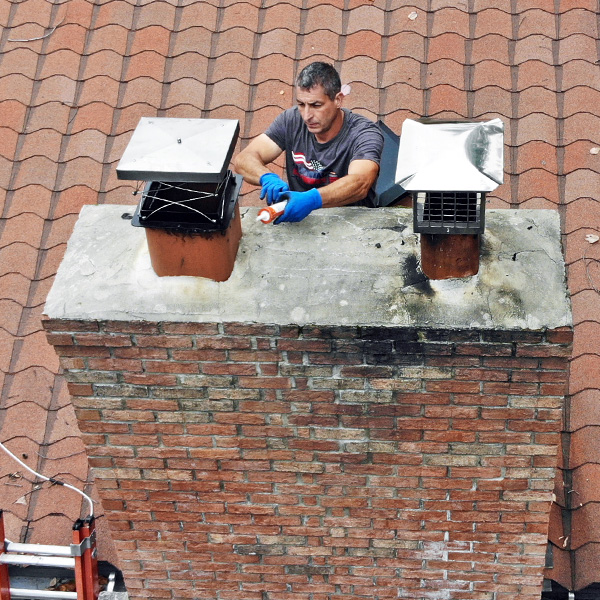Top Mount Vs. Throat Dampers
If you have a chimney, you are familiar with sealing it off after extinguishing the fire in your fireplace to keep warm air in and the outside air out. You probably aren’t aware of how your chimney opens and closes and that there are two different types of mechanisms that open and close it. These mechanisms are known as a top mount (a damper) or throat damper. So, let’s look at a top mount versus a throat damper.
Why Close Off Your Chimney? 
There are a few reasons to close off your chimney with a damper, but first, remember never to shut a damper when your fire is going; it could lead to carbon monoxide poisoning.
The first reason to shut your chimney off is to keep the fire’s heat from escaping once the fire is out. You don’t want to let cold air from outside cool down your house after just warming it up.
The second reason you need to close off your chimney is to keep the elements from coming in. Snow or rain can find its way down your chimney and into your fireplace if left open. The third reason is you don’t want wildlife to find a way into your home through your chimney.
What is a Top Mount Damper?
A top mount damper is what it sounds like, a damper at the top (or crown) of your chimney. The top mount damper was more common with newer homes and is used more today than throat dampers are. What are the advantages of using a top mount damper? A top mount damper protects your whole chimney from what’s outside. You don’t have to worry about leaves finding their way inside your chimney when a top mount damper protects it. Similarly, you don’t have to worry about rain or snow finding its way into your chimney and down to your fireplace. Consistently having moisture find its way into your chimney can lead to mold or algae buildup over time.
Another advantage of having a top mount damper is keeping wildlife out of your chimney; you won’t have to worry about birds, bats, or raccoons making your chimney their residence.
The disadvantages of a top mount damper are mainly financial. A top mount damper costs slightly more than a throat damper because of its location on top of the chimney. A top mount damper also lets more hot air escape up your chimney instead of being sealed inside the house, meaning it costs more to heat your home with a top mount damper.
What is a Throat Damper?
A throat damper serves the same purpose as a top mount damper, to seal your fireplace off from outside elements; the main difference is a throat damper is located just above your fireplace in the “throat” of the chimney. As we stated earlier, most older homes with fireplaces use throat dampers. A throat damper is usually made from cast iron or stainless steel and sits on a set of tracks that let it move back and forth, while others have a pulldown handle that allows you manually open or shut the damper.
Which is Superior, a Top Mount or Throat Damper?
Which of the dampers is superior? In most cases, it’s the top mount damper because it seals off the entire chimney and protects it from rain, snow, leaves, and wildlife. If you live in an area where it’s unlikely to have large amounts of rain or wildlife seeking to invade your chimney, then a throat damper is sufficient and will keep more warm air in your home.
To Sum Up
A top mount damper is superior for most fireplaces and will protect your chimney for the long run. If you live in an arid climate where animals are unlikely to seek shelter in your chimney, then a throat damper is better and will keep your house warmer.

National Chimney Cleaners Knows Dampers
If you are seeking to replace an old throat damper with a new top mount damper, or the other way around, we can help you.
Not only can we inspect and clean your chimney, but we can also install dampers. Call us today if you are having issues with your damper.
One of our helpful staff will be happy to schedule a time where we can come out and inspect your damper.


